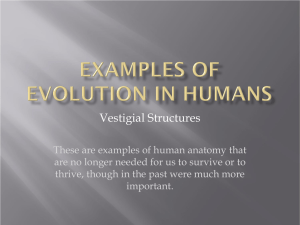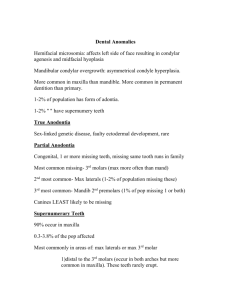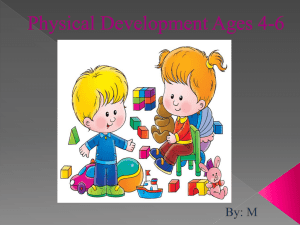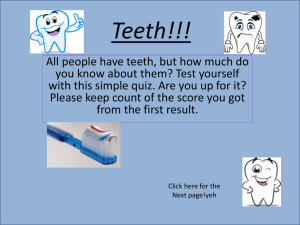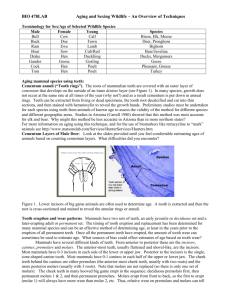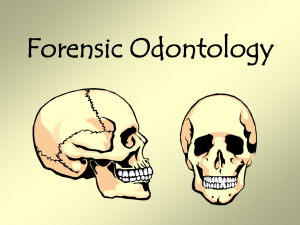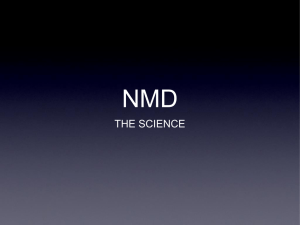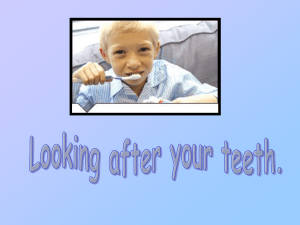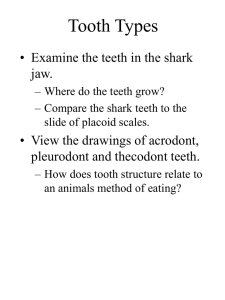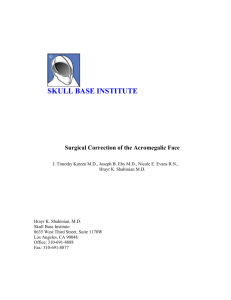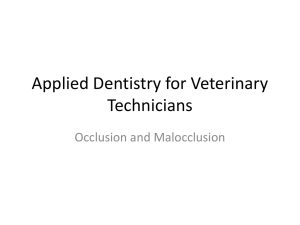Forensic Odontology
advertisement
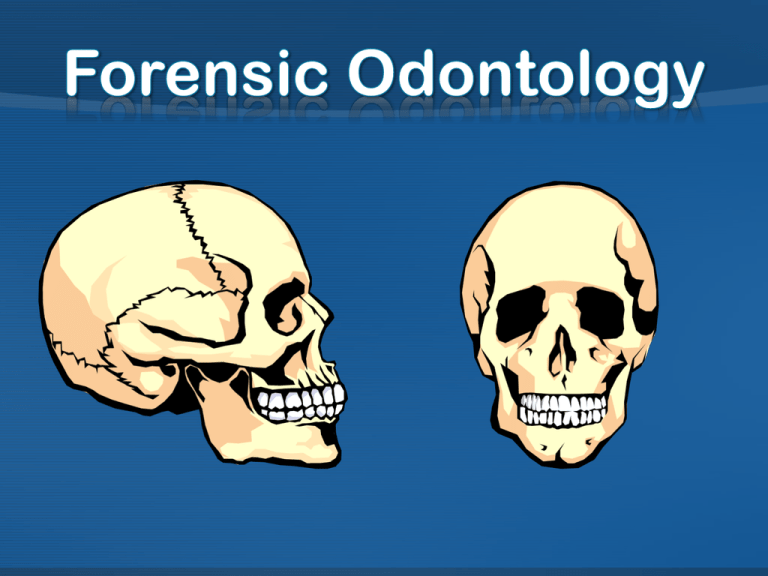
Forensic Odontology is a branch of forensic medicine which, in the interest of justice, deals with the proper examination, handling and presentation of dental evidence in a court of law. Forensic Odontologists will often work with forensic pathologists and forensic anthropologists. • ID of bite marks on a victim • Comparison of bite marks with the teeth of a suspect and presentation of this evidence in court as an expert witness • ID of bite marks on other substances such as wood, leather and foodstuffs • ID of unknown bodies through dental records • Age estimations of skeletal remains • • • • • • • • The distance from cuspid to cuspid The shape of the mouth arch The evidence of a tooth out of alignment Teeth width and thickness, spacing between teeth Missing teeth The curves of biting edges Unique dentistry Wear patterns such as chips or grinding Answer: Horrible!!! Why? Soft tissue will swell or distort and… two people can have similar teeth construction. However… bite marks can exclude suspects. Answer: Excellent!!! Teeth remain very intact even through violent crimes, fires, accidents and advanced decomposition. DNA is also preserved very well in the pulp of a tooth. • canine (also called cuspid) - the pointy tooth located between the incisors and the premolars. A canine tooth has 1 root. Adults have 4 canine teeth (2 in the top jaw and 2 in the bottom jaw). Canine means, "of or like a dog." • incisors - the front teeth, used for cutting food. An incisor has 1 root. Adults have 8 incisors (4 in the top jaw and 4 in the bottom jaw). • premolars (also called bicuspids) - the teeth located between the canine and the molars. A premolar tooth has 1 root. Bicuspids have two points (cusps) at the top. Adults have 8 premolars (4 in the top jaw and 4 in the bottom jaw). • molars - the relatively flat teeth located towards the back of the mouth, used for grinding food. Molars in the top jaw have 3 roots; molars in the lower jaw have 2 roots. Adults have 12 molars (6 in the top jaw and 6 in the bottom jaw) Will have 4-5 cusps. Location Number # of Roots # of Cusps (points) Canine (cuspids) Between incisors and premolars 4 (2 on top two on bottom) 1 1 (pointed) Incisors Front of both upper & lower jaws 8 (4 on top 4 on bottom) 1 1 (flat ridge) Premolars (bicuspids) Between Canine (Cuspids) & molars 8 (4 on top 4 on bottom) 1 2 Molars Back of the mouth 12 (6 on each Top have 3; jaw) bottom have 2 4-5 1. 2. 3. 4. 5. 6. 7. 8. What is forensic odontology? What other scientists often work with an forensic odontologist? Give 2 examples of information they can discover. Why aren’t teeth marks reliable evidence? How are teeth helpful for forensic investigations? What is the name of the front row of teeth? How many teeth do most adults have? Explain how you would differentiate and identify one tooth from another…
